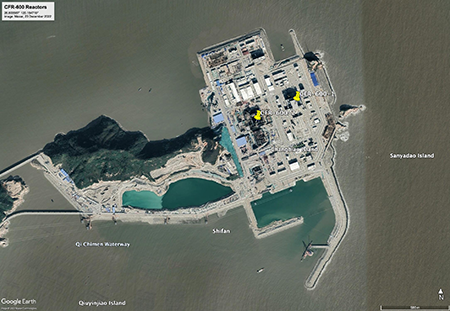"No one can solve this problem alone, but together we can change things for the better."
Pentagon Says Chinese Nuclear Arsenal Still Growing
January/February 2025
By Shizuka Kuramitsu
China’s nuclear arsenal likely exceeds 600 operational nuclear warheads as of mid-2024, part of a diversified buildup that is projected to continue after 2030, the Pentagon said in its annual assessment of China’s military capabilities.

When compared to previous reports, “[w]e’re showing a rate of growth that is pretty well consistent with what we’ve described in reports over the past three years…about their nuclear expansion and modernization,” a senior U.S. defense official said at a press briefing on Dec. 18.
The spokesperson for the Chinese Defense Ministry, Zhang Xiaogang, told state-run Xinhua news on Dec. 21 that the intention of China’s nuclear weapons development is to “safeguard the country’s strategic security.”
“We urge the [United States] to stop fabricating false narratives, rectify the erroneous perception of China, and push for the healthy, stable development of bilateral and military relations,” he said.
The Pentagon’s annual report on China’s military power, published Dec. 18, covers developments through 2023. It repeats an estimate first made in 2021 that “China will have over 1,000 operational nuclear warheads by 2030” and will “continue growing its force through at least 2035.” But the report did not reiterate the projection published in 2023 that China aims to obtain 1,500 warheads by 2035. (See ACT, January/February 2023.)
When asked about removing that projection from the 2024 report and whether the previous projection still holds, the U.S. defense official said that “we think that [China] will continue growing their force to 2035 in line with the previous estimates.”
Given that 2035 is still more than a decade away, he said that “we’re still learning more, and [China] may be still defining for itself more of what basically completing [its] modernization means for 2035.”
“That could certainly change [China’s] perception of its strategic security environment, something that is always evolving and that they’re reassessing.… [B]ut I would certainly expect them to continue expanding the modernization [of] their force,” he added.
In general, this year’s report reaffirms previous assessments and adds specific timelines. For instance, the report says that China will implement a launch-on-warning posture “this decade.” Aligning with previous estimates that the Chinese nuclear arsenal is shifting from its historical posture of maintaining the capability to deal limited retaliatory damage, the report “suggests that [China] seeks to have the ability to inflict far greater levels of overwhelming damage to an adversary in a nuclear exchange,” including adopting a launch-on-warning posture and employing lower-yield nuclear weapons.
The report says that the Type 096 ballistic missile submarine (SSBN) “probably is intended to field” sea-launched ballistic missiles with multiple independently targetable reentry vehicles and “probably will begin construction in the mid-2020s,” a delay from last year’s estimate of “the early 2020s.” The Type 096 SSBN, China’s next-generation nuclear-powered submarine with longer-range sea-launched ballistic missiles, “will likely begin construction soon” and “is expected to enter service in the late 2020s or early 2030s,” the report says.
To support its nuclear force expansion, China has completed one of its two fast breeder nuclear reactors at Xiapu and construction on the other reactor continues, the Pentagon said. Hui Zhang, a senior research associate at Harvard University’s Belfer Center for Science and International Affairs, previously noted the development in an open-sourced assessment in Dec. 2023.
Confirming a leaked intelligence report from February 2023, the Pentagon assessed that China’s new Dongfeng-27 (DF-27) missile, which can be configured either as an intermediate-range or intercontinental ballistic missile, has a hypersonic glide vehicle payload option. Further, the report said that China “may have deployed” the DF-27 missile with this capability to its rocket force.
The report noted that China “largely denied, cancelled, and ignored recurring engagements and requests for communications” with U.S. officials until the November 2023 meeting between Chinese President Xi Jinping and U.S. President Joe Biden. Although bilateral tensions remain high, the Pentagon “is committed to maintaining open lines of communication with [Beijing] to ensure competition does not veer into conflict,” the report said.
It added that the U.S. Defense Department’s “objectives in maintaining military-to-military channels are to help prevent crisis, reduce strategic and operational risk, and clarify misperceptions.”
